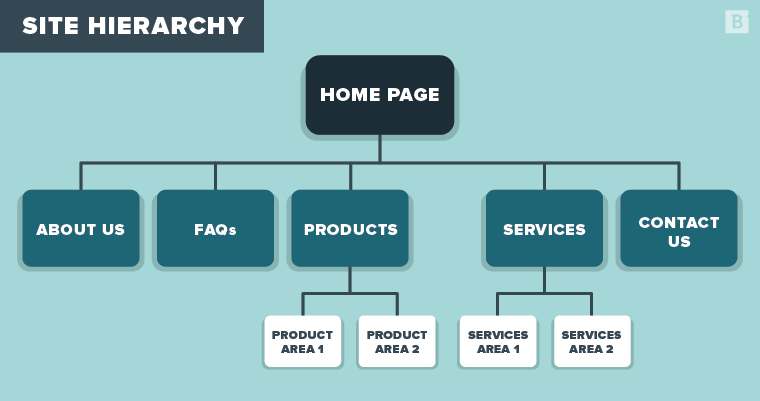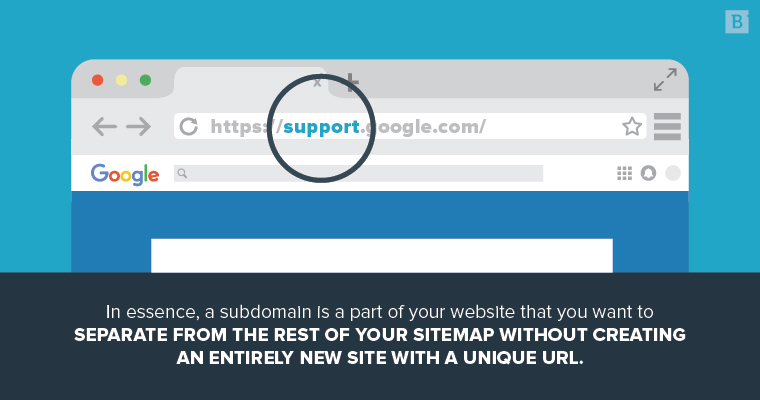One of the most frequent questions our tech team hears is, “Exactly what is a subdomain?” An important question, to be sure. The natural follow-up, though, is, “When is the best time to use them?”
Subdomains are integral to the architecture of the sites that use them, as they signal key information to Google, such as:
- How the content and links on a subdomain relate to the content and links on the main domain.
- How search crawlers should decipher and index the information they find.
- How important the subdomain is to other portions of the site or even other subdomains.
Subdomain SEO is thus its own discipline within digital marketing and web development, emphasizing the importance of a well-thought-out SEO strategy that incorporates both the main domain and its subdomains. This includes leveraging SEO services to optimize each subdomain to target different sections of your audience effectively.
Read on to learn more about the nature of subdomains, when you should and shouldn’t consider using them and what Google and SEO experts have to say about the matter.
What Is a Subdomain?
A subdomain is a division of your website that you want to distinguish with its own unique identity and content. For example, Brafton’s CMS platform is placed under the subdomain www.software.brafton.com. This way, the content associated with our software is easily segmented from our parent domain.
Beyond simply segmenting content, why separate certain areas of your website into subdomains? Let’s take a look at an example of a site hierarchy:

Why Subdomains Are Used
That diagram is pretty clear-cut and easy to follow, right? But let’s say instead of a simple FAQ page, you want to build out an extensive research library filled with white papers, datasheets, training materials, user guides and product operation instructions. All of a sudden, that nice, neat sitemap would get very complicated, very fast.
A subdomain lets you separate portions of your site that are extensive enough to warrant their own dedicated hierarchy without going to the trouble of setting up a new site with a new domain — or confusing visitors with a completely different root domain. This approach can significantly boost your SEO efforts by allowing you to target specific keywords and topics more effectively within separate sections of your website.
For instance, employing multiple subdomains can be a strategic move if your business requires separate websites for different product lines or services. This setup allows for dedicated subdomain names, each focusing on specific business areas, such as retail.company.com for a retail division and wholesale.company.com for wholesale operations. Breaking it up not only helps organize content but also implement targeted search engine optimization strategies for each subdomain.
Many companies use subdomains in this fashion — even Google itself. If you need assistance with any of the tech giant’s apps, you’ll be directed to this page: https://support.google.com/
Notice that it’s not https://google.com/support, but https://support.google.com.

What Are the SEO Implications of Subdomains?
“So, it’s a good organizational tool,” you might be asking yourself, “but what does a subdomain have to do with SEO performance and organic rankings?” Excellent question.
First of all, there’s really no such thing as organization for organization’s sake when it comes to site structure and hierarchy. A website that’s confusing to navigate due to poor structure is inevitably going to be penalized by search engines.
A bad site layout will lead to visitors spending less time on your page (or more time on the page if it takes them a long time to find what they’re looking for), resulting in a less-than-satisfactory experience and potentially hurting your search performance. By using subdomains to streamline your site hierarchy, you help users find the information they seek more efficiently, improving your website’s SEO performance.
If you’re keyed into the SEO-focused blogosphere, at this point, you’re probably thinking to yourself, “Wait, I thought subdomains were bad for SEO ranking performance?”
There is a lot of back and forth as to whether — and to what degree — subdomains impede the search ranking of a primary domain. On the decision to opt for a subdomain rather than a subfolder (more on subfolders below), Google says: “From an indexing and ranking perspective, Google doesn’t have a preference.” They also say that businesses should “choose whatever is easiest for you to organize and manage.” That is to say, then, that subdomains are not inherently bad for SEO. Although, as previously touched on, the ranking success of a subdomain won’t necessarily correlate to its primary domain.
What Is a Subfolder or Subdirectory?
A subfolder, also known as a subdirectory, is exactly as the name implies: a folder of pages that still exist and nest under the root domain. It is not viewed as a standalone site within Google’s eyes like a subdomain is.
The graphic below breaks down the distinctions between subdomain and subfolder for easy reference:

Site hierarchy best practices stress the importance of simplicity, recommending that organizations minimize the number of categories and subcategories included in any navigation sitemap. Kissmetrics, for instance, suggests keeping the number of site categories limited to anywhere from 2 to 7.
Second-level Domains Are Basically the Same as a Subdomain, Right?
Despite the nomenclature, the second-level domain is arguably the most important part of your main site name. That’s because top-level and second-level domains actually refer to the hierarchy of web addresses, not how they relate to your main website.
Again, take brafton.com. In this case, “.com” is the top-level domain (TLD), indicating that the site is a commercial website. Web address suffixes like .org, .edu and .gov are all top-level domains. Your domain TLD could also reference the site’s country: .ca, .it, .in, .uk, etc. We’re really talking about the building blocks of websites here.
With that in mind, “brafton” is the second-level domain. And really, that’s what people remember and associate with your main site. No one calls Google “google.com” or LinkedIn “linkedin.com.” That would be crazy.
How Do You Set Up a Subdomain?
There are basically two ways in web development to create a subdomain: using a CNAME record or an A record. CNAME is a record that resolves to an alternative URL, while an A record resolves to an IP address.
Regardless of which approach you take, the record needs to be created according to your subdomain’s hosting specifications. If you don’t follow those hosting specifications, you run the risk of setting up a DNS record tool that won’t properly resolve when the hosting account receives requests from it. With that in mind, it could be a good idea to consult your domain provider (aka, your web hosting provider, or more simply, “domain host”) to get all the hosting information you’ll need and remove any guesswork from the equation. We recommend choosing the best PHP hosting depending on your needs; this way, it will be easier to set up your subdomain.
How does all of this look in action? Let’s say you’re hosting through WP Engine and want to set up a dedicated website subdomain for your blog. You’ll need to go through an online portal that looks something like this:

When you go to create a subdomain, WP Engine will issue you a temporary URL to use. From there, you can choose to create either a CNAME record to resolve back to that URL or an A record to resolve your new blog to a specific IP address.
Finally, you’ll need to register your new subdomain with WP Engine so it knows how to properly resolve it.
When Does It Make Sense To Use Subdomains?
Given how extensive Google’s support page is, it’s a perfect candidate for subdomain status: There are a dozen apps to cover, each with unique troubleshooting articles and user guides.
Subdomains are also pretty essential if your company operates in different international markets and you want to set up distinct websites geared toward certain countries and regions. If your German customers are forced to navigate the same website as your customers in North America (in English, mind you), that’s not going to lead to a great brand experience. A subdomain saves you the trouble of having to buy a new domain for each country.
In a similar fashion, subdomains are useful when you want to create a different brand experience for users. For instance, when companies have different products and services for both consumer and business audiences. If you want to create distinct e-commerce sites for both B2C and B2B audiences (Amazon, for example, has a separate Amazon Business site for B2B users. Although it’s not a subdomain.), a subdomain could be a good option.
Comcast Business is a great example of how subdomains support a better brand experience. Those services are specifically geared toward a B2B audience and are fairly extensive, so it wouldn’t make sense to bury that information somewhere in Comcast’s primary, consumer-focused site. The https://business.comcast.com/ subdomain allows Comcast to create two separate brand experiences for two very different target audiences while using the same domain name.
Companies may also use subdomains to set up mobile-focused variations of their main websites. Obviously, navigating a web page is very different on a smartphone or tablet than on a desktop PC. Adaptive development processes dictate that developers account for different screen sizes and form factors when designing mobile websites. Creating a separate subdomain allows businesses to provide an intuitive user interface for both desktop and mobile site visitors.
Should You Use Subdomains?
You’re probably hoping for a pretty cut-and-dry answer here, but there isn’t one.
Like just about everything else related to SEO and Google ranking factors, you have to take things on a case-by-case basis. There’s no set rule dictating the use of subdomains because, for some companies, their benefits will outweigh any potential SEO fallout (either real or perceived).
In other instances, subdomains won’t provide any tangible value over subdirectories that extend from your main domain, so there’s no sense in making significant changes to the site structure. At the end of the day, it depends on what makes the most sense for your website.
It’s also important to consider the configuration of your SEO tools and understand how search engines interpret your multiple domains. Tools like Google Analytics and Google Search Console may not default to tracking and reporting metrics across a root domain and subdomain — they’re not recognized as the same, after all.
Instead, cross-domain analytics tracking should be set up to ensure you’re capturing the entire scope of your domains.
In other cases, tools like Semrush, Moz or Ahrefs generally, by default, lump all subdomain and root domain metrics together for ease of use. This level of granularity then informs important benchmarks like Domain Authority.
In conclusion, the decision to use subdomains is far from one-size-fits-all in the realm of SEO and website structure. The effectiveness of subdomains versus subdirectories depends on the unique characteristics of each website and its specific goals.
While some companies may find substantial benefits that outweigh potential SEO concerns, others may discover that subdomains offer little tangible value over subdirectories.
Ultimately, the key lies in aligning your website structure with what makes the most sense for your individual needs and goals, while ensuring that analytics tools are configured to provide comprehensive insights across all domains.
Editor’s Note: Updated September 2024





